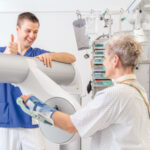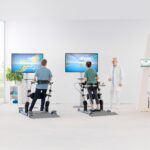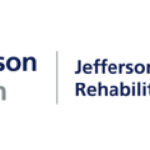Intensive & acute care
Wake up and move.
For Intensive- and acute care settings, THERA-Trainer offers the latest technologies for in-bed cycling and early mobilisation.

For Intensive- and acute care settings, THERA-Trainer offers the latest technologies for in-bed cycling and early mobilisation.


There is substantial evidence that supports the role of early mobilisation of critically ill patients. In-bed cycling and early verticalisation within the ICU are proven to reduce length of hospital stay. With the THERA-Trainer early mobility program you make it work – not only for patients but also for clinicians.
“There is no medication to treat prolonged bed rest. The most important thing to shorten ICU and hospital length of stay, is to wake up and get patients moving as early as possible.”
Tobias Giebler
Clinical Expert Intensive Care


The medical benefits associated with early mobility interventions can also translate to economic benefits. Recent clinical research suggests that implementing an early mobility protocol can lead to a potential cost saving of an average of 7% per patient in critical care.
You want to experience THERA-Trainer in the clinic, practice or at home? Arrange a free demo now.
THERA-Trainer complete solutions are the consistent implementation of evidence-based, clinically proven rehabilitation pathways. We will help you to find the perfect combination of our THERA-Trainer products for your requirements, whether you work in acute care, rehabilitation, inpatient or outpatient care.
Get in touch
Worldwide, doctors, therapists and, most importantly, patients rely on THERA-Trainer’s unique rehabilitation solutions. Here are some of our trusted partners.




Any questions? Our clinical experts are ready to help.
We are looking forward to hearing from you.